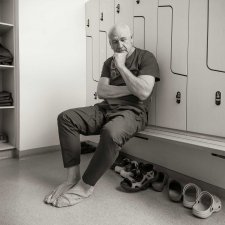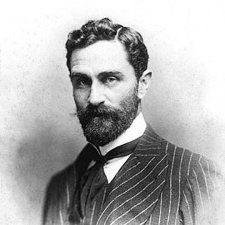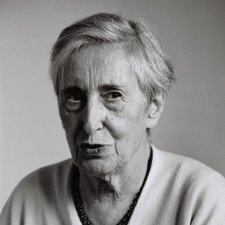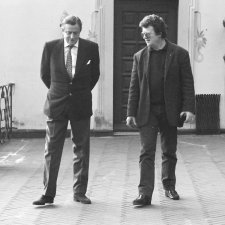
Best buds
It’s important to have a best bud when you’re growing up. For many boys the transition from boyhood through adolescence is defined by wanting to fit in.

An active and contemplative life
From Cicero through St. Augustine and Coluccio Salutati right up to the present day, we have regularly weighed the significance, respective merits and competing priorities of the “active” versus the “contemplative” life. Can they coexist?

Danger boy
I didn’t ever meet the American artist Chris Burden but about 20 years ago I wrote to him. I was after the loan of some photographic prints of his most famous performance: he had arranged for a friend to fire a bullet so it would graze his arm.

The selfie stick
Last week ABC Television came to interview me about selfie sticks. The story was prompted by the announcement that the Metropolitan Museum of Art in New York has lately prohibited the use of these inside their galleries. So far as I am aware we have not yet encountered the phenomenon, but no doubt we will before too long.

On the passage and pace of time
In shock it fluctuates and with age, accelerates. Remembering the First World War and the Easter Rising.

Dance like everyone’s watching
Penelope Grist’s spirits soar with Lisa Tomasetti’s Dancers in the Streets series.

Stubbs and the horse
One of the chief aims of George Stubbs, 1724–1806, the late Judy Egerton’s great 1984–85 exhibition at the Tate Gallery was to provide an eloquent rebuttal to Josiah Wedgwood’s famous remark of 1780: “Noboby suspects Mr Stubs [sic] of painting anything but horses & lions, or dogs & tigers.”

Remembering Ursula
I first knew Dr. Hoff when in 1986, long after retiring from the National Gallery of Victoria, she taught a graduate seminar on Rembrandt.

The cost of living luxuriously
In 1904, the Dowager Empress Marie Feodorovna of Russia purchased as a gift for her sister, Queen Alexandra, a fan composed of two-color gold, guilloché enamel, mother-of-pearl, blond tortoiseshell, gold sequins, silk, cabochon rubies, and rose diamonds from the House of Fabergé in Saint Petersburg.

Talking heads
In their own words lead researcher Louise Maher on the novel project that lets the Gallery’s portraits speak for themselves.

A bear of great substance
Just in time for Christmas, Angus reflects on the most special present he has ever received.

Inditchenous beestes of New Olland
A remarkable undated drawing by Edward Lear (1812–88) blends natural history and whimsy.

Kate Beynon’s transcultural life and art
Phoebe Lupton profiles artist Kate Beynon, whose contemplative self portrait features in Archie 100: A Century of the Archibald Prize.

The Thyssen Art Macabre
Books seldom make me angry but this one did. At first, I was powerfully struck by the uncanny parallels that existed between the Mellons of Pittsburgh and the Thyssens of the Ruhr through the same period, essentially the last quarter of the nineteenth century.

School portraits
Inga Walton sheds light on a portraiture collection usually only seen by students and teachers at Melbourne University.

Poise and Carats
I keep going back to Cartier: The Exhibition at the National Gallery of Australia next door, and, within the exhibition, to Princess Marie Louise’s diamond, pearl and sapphire Indian tiara (1923), surely one of the most superb head ornaments ever conceived.




